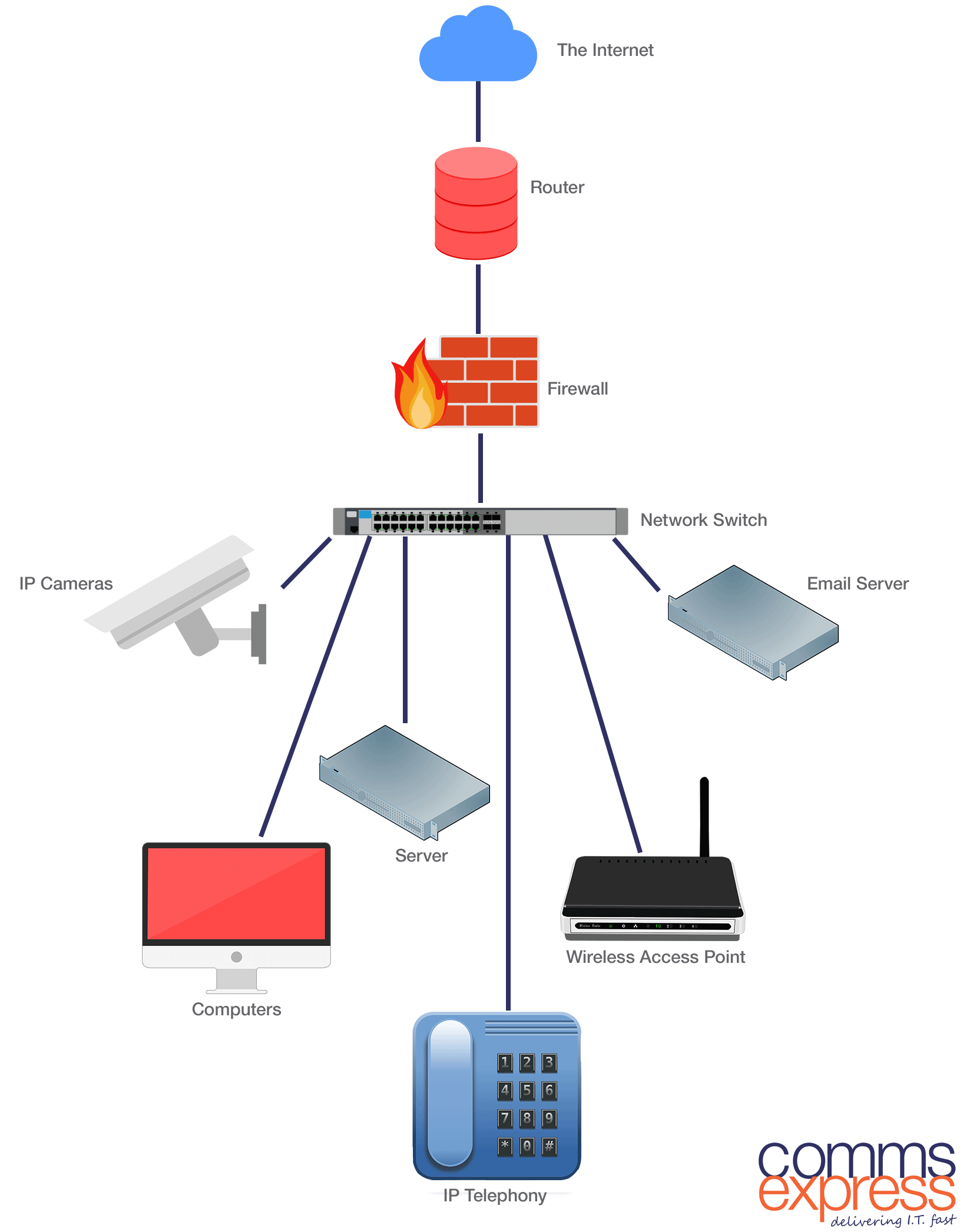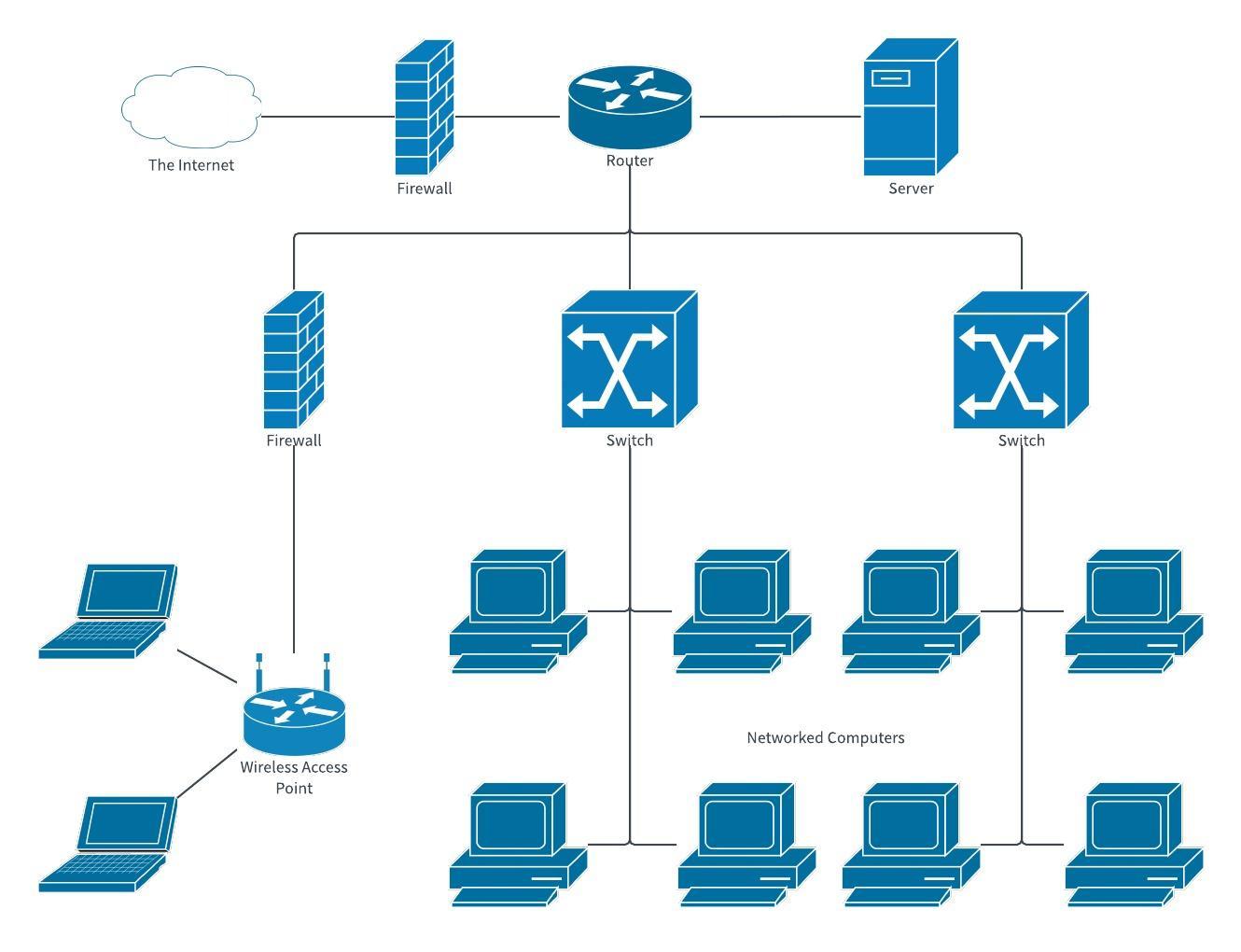network Topologies for Small and Medium Businesses: A Comprehensive Guide
Network topology refers to the physical and logical arrangement of interconnected devices within a network. It significantly influences factors like performance, scalability, reliability, and ease of management. For small and medium-sized businesses (SMBs), choosing the right network topology is crucial for ensuring efficient communication, data flow, and overall business operations. This article will explore the most common network topologies suitable for SMBs, along with their advantages and disadvantages.
Concept: In a bus topology, all devices are connected to a single, shared communication medium, typically a coaxial cable. Data is transmitted in a linear fashion, from one device to another, along the bus.
Simple and Cost-Effective:

Bus topology is relatively easy to install and maintain, requiring minimal cabling. It is also generally less expensive compared to other topologies.
Centralized Control:
A single cable makes it easier to manage and troubleshoot network issues.
Single Point of Failure:
A break in the main cable can disrupt the entire network.
Limited Scalability:
Adding new devices can be challenging and may require significant network reconfiguration.
Performance Degradation:

As more devices are added, network performance can degrade due to increased traffic and potential collisions.
Concept: In a star topology, all devices are connected to a central hub or switch. Data is transmitted from the source device to the hub/switch, which then forwards it to the intended destination.
Easy Troubleshooting:
Isolating and troubleshooting faulty devices is relatively straightforward.
High Reliability:

Failure of one device generally does not affect the rest of the network.
Easy Expansion:
Adding new devices is simple, as they only need to be connected to the central hub/switch.
Dependency on Central Device:
Failure of the central hub/switch can bring down the entire network.
Higher Cost:
Requires more cabling compared to bus topology.
Concept: In a ring topology, devices are connected in a closed loop, with each device directly connected to its two neighbors. Data travels unidirectionally around the ring.
High Bandwidth:
Can offer high bandwidth and efficient data transmission.
Fault Tolerance:
Some ring topologies incorporate mechanisms like token passing, which can help detect and bypass faulty nodes.
Complex Installation:
More complex to install and maintain compared to bus or star topologies.
Single Point of Failure:
A break in the ring can disrupt network communication.
Difficult Troubleshooting:
Identifying and isolating faulty devices can be challenging.
Concept: In a mesh topology, each device is connected directly to multiple other devices, creating a network of interconnected nodes.
High Redundancy:
Multiple paths exist for data transmission, providing high fault tolerance and reliability.
High Bandwidth:
Can offer very high bandwidth due to multiple connections.
Scalability:
Easily scalable to accommodate new devices.
High Cost:
Requires significantly more cabling compared to other topologies.
Complex Installation and Management:
Installation and maintenance can be complex and expensive.
Concept: A hierarchical topology resembling an inverted tree. The network is divided into segments, with a root node (typically a server) at the top and branches extending downwards.
Easy Management:
Hierarchical structure facilitates centralized management and control.
Scalability:
Can be easily expanded by adding branches to the tree.
Fault Isolation:
Faults are typically isolated within a specific branch, minimizing disruption to the entire network.
Dependency on Root Node:
Failure of the root node can significantly impact network functionality.
Complex Cabling:
Can require complex cabling arrangements.
The optimal network topology for an SMB depends on various factors, including:
Budget: Consider the cost of cabling, hardware (switches, routers, etc.), and installation.
Small Office with Limited Devices: Star topology is often the most suitable due to its simplicity, ease of management, and relatively low cost.
In many real-world scenarios, a combination of different topologies is used to create a hybrid network that leverages the advantages of each. For example, a star-bus topology can be used, where multiple star topologies are connected together via a bus.
Selecting the appropriate network topology is a critical decision for any SMB. By carefully considering the factors discussed in this article and evaluating the specific needs and requirements of your business, you can choose a topology that optimizes network performance, reliability, and scalability, ultimately contributing to increased productivity and business success.